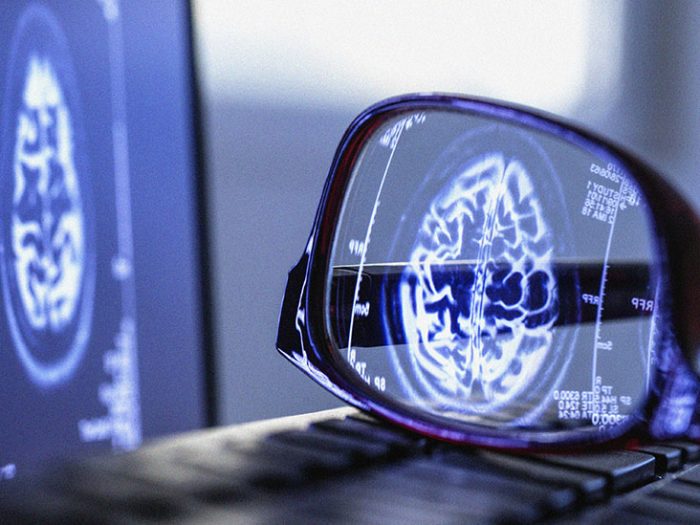In a living systematic review and meta-analysis in The BMJ, scientists from the United Kingdom, along with international collaborators, continue to collate and analyze emerging evidence of how COVID-19 affects women and their babies during and shortly after pregnancy.
In the latest update, the team confirms that pregnant women attending or admitted to the hospital from whatever cause continue to be at a greater risk of severe COVID-19 than nonpregnant women of similar ages.
Preexisting diabetes, chronic hypertension, asthma, smoking, gestational diabetes, preeclampsia, being aged 35 years or over, and having a body mass index (BMI) of 30 or above were all associated with greater odds of severe COVID-19 and requiring admission to the intensive care unit (ICU).
Nonwhite ethnicity was linked with a greater likelihood of ICU admission, but not necessarily with severe COVID-19.
Meanwhile, babies of mothers with COVID-19 were more likely to require admission to the neonatal intensive care unit (NICU). The authors note that this could be due to hospital policies for observation and quarantine of babies in contact with COVID-19.
Dr. John Allotey, the study’s first author and a lecturer in epidemiology and women’s health at the World Health Organization (WHO) Collaborating Centre for Global Women’s Health at the University of Birmingham in the U.K., comments: “Pregnant women should be considered a high risk group, particularly those identified to have risk factors, for severe COVID-19 based on our findings.”
“Mothers should also be reassured that the risks to their babies are very low,” he continues.
Reviewing the evidence
The research team started work on the review in April 2020. For its first iteration, they collated data from available publications between December 2019 and June 2020.
Each week, the researchers looked for newly published data, which they aimed to review every 2–4 months. For the recent update, they added new studies published up until October 2020.
The review now includes data from 192 studies and 29 different countries. Of these studies, 115 were new editions to the latest update.
Overall, the data show that 10% of pregnant women who are either admitted to the hospital or visiting the hospital receive a positive SARS-CoV-2 test.
Pregnant women are more likely than nonpregnant women to have an asymptomatic SARS-CoV-2 infection.
However, the reason for this may lie in the strategy for testing.
Pregnant people routinely undergo COVID-19 testing when they attend hospital appointments, while nonpregnant individuals most likely have a test when they experience symptoms.
“[The] true prevalence of [COVID-19] in pregnancy is likely to be lower than the current estimate if all pregnant women, including those not attending the hospital, are included,” the authors comment in the paper.
While the risk of severe COVID-19 was greater for pregnant women than for nonpregnant women overall, there were specific risk factors that the team identified.
These include age, BMI, preexisting conditions, as well as conditions developed during pregnancy.
The researchers found that pregnant women or those who had recently given birth were more likely to die if they had COVID-19 than those who were the same age but not pregnant. In addition, the rates of premature birth and stillbirth were higher for women with the disease.
However, the team caveat that the premature births are likely to be the result of medical decisions to induce early delivery in those with COVID-19 as the number of spontaneous preterm births was the same as baseline levels. The number of stillbirths across all of the studies included in the review was very small (9 out of 5,794 women with COVID-19).
More data needed
One further issue that this review found is that women who were of nonwhite ethnicity were more likely to require admission to the ICU for COVID-19 treatment.
There was a link between nonwhite ethnicity and a greater likelihood of ICU admission, based on four studies covering 31,456 individuals. Four smaller studies covering 2,263 women suggested that nonwhite ethnicity may result in having a 6% lower chance of severe disease. However, this figure could vary between 43% less likely and 57% more likely.
Other studies have previously found disparities in maternal outcomes between people of different ethnicities.
“The observed disparity could be attributed to associated comorbidities, socioeconomic characteristics, and factors related to access to and quality of care in the preconception, pregnancy, and postpartum periods,” the review’s authors write in their discussion. “The multifaceted contributors to ethnic disparities need to be investigated to reduce mortality and morbidity related to both [COVID-19] and pregnancy.”
The team highlights several limitations of their review, including the fact that the studies included in the analysis did not use the same methods to collect and gather data. This is an issue that all systematic reviews face.
Senior study author Professor Shakila Thangaratinam, who is the Co-Director of the WHO Collaborating Centre for Global Women’s Health, comments on the team’s finding:
“In the current situation, where evidence is rapidly produced, our living systematic review — underpinned by robust methods and continually updated at regular intervals — is crucial to address important research questions and to shape healthcare policy and clinical decision-making.”
“Pregnant women and healthcare professionals will need to take into account the additional risks faced by pregnant women with COVID-19 in making decisions, such as taking-up of vaccines if offered to prevent COVID-19 and plan management in pregnancy.” – Prof. Shakila Thangaratinam
The Centers for Disease Control and Prevention (CDC) additionally state that “[a]lthough the overall risk of severe illness is low, pregnant people are at an increased risk for severe illness from COVID-19 when compared to nonpregnant people.”
They advise nonpharmaceutical interventions, such as mask wearing, physical distancing, avoiding crowds, and limiting contact with people who may have been exposed to the SARS-CoV-2 virus to reduce the risk of developing COVID-19.
The CDC also suggest having a COVID-19 vaccine when it is available to pregnant people and speaking with a healthcare professional about any questions or concerns.










